Wyncie King, 1884-1961: A Sketch
By Noah G. Huffman
Special Collections Assistant
About |
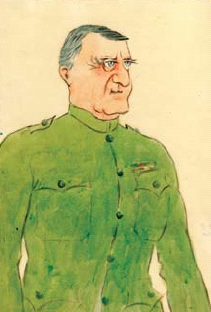 As with just about everything else, Leonardo Da Vinci is sometimes credited with inventing the caricature—a drawing or sketch that exaggerates a subject’s distinctive features to achieve a comic effect.
As with just about everything else, Leonardo Da Vinci is sometimes credited with inventing the caricature—a drawing or sketch that exaggerates a subject’s distinctive features to achieve a comic effect.
If not its inventor, Da Vinci was certainly one of the earliest practitioners of the art form, which according to most scholars entered its “Golden age” in the 1920s and 1930s. During this two decade period, one of the most prolific caricaturists was Wyncie King, a Louisville resident from about 1910 to 1921. Over the course of his career, King’s illustrations appeared in magazines like the Saturday Evening Post and were exhibited at the Art Institute of Chicago and the Pennsylvania Academy of Fine Arts. Before earning national recognition, however, King was an illustrator and caricaturist for the Courier-Journal and the Louisville Herald. In his retirement, King remembered these years in Louisville fondly, and in 1958 he donated a small but significant collection of his along with an assortment of cartoons and other small sketches.
The bulk of the 86 watercolor
caricatures, now housed in The
Filson’s special collections, were
completed by Wyncie King around
1920 and depict prominent
Louisvillians and distinguished
visitors that he encountered
during his tenure at the Louisville
Herald from 1911-1921. “They
were people of character and
distinction in the community of
that  era,” King wrote to Filson
Curator Dorothy Cullen in May
1958. “I savored the making of
each drawing and remember many
details of each.” Thanks to King’s
unique abilities, the caricatures
provide an unusual glimpse into
the “life and likeness” of these
personalities that is hard to glean
from books, documents, or even
formal portraits.
era,” King wrote to Filson
Curator Dorothy Cullen in May
1958. “I savored the making of
each drawing and remember many
details of each.” Thanks to King’s
unique abilities, the caricatures
provide an unusual glimpse into
the “life and likeness” of these
personalities that is hard to glean
from books, documents, or even
formal portraits.
Born in Covington, Georgia in 1884, Wyncie King spent much of his life explaining the story behind his unusual name. When deciding whether to name their son after Rufus King, a Revolutionary War hero, or after another relative who was a 19th century Tennessee notable, Mr. and Mrs. George Whitfield King could not reach an agreement. For the first several months of their son’s life, the Kings referred to him as only their “teensy weensy boy.” When the young child grew old enough to talk, he assumed “weensy” was his given name, and his parents never resisted. Wyncie he remained.
When King was still young,
the family relocated to Paris,
Tennessee, where at age 19, he
signed on as a weighmaster for
the Louisville and Nashville
Railroad. While waiting for the
next train, King would often fill
his spare time drawing sketches 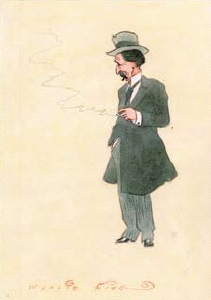 and caricatures of his coworkers.
Confident that his likenesses
were better than those featured in
the local paper at the time, King
took several of his drawings to
the editor of the Nashville Banner who promptly bought them and
requested more. Before long, he
was on staff at the Banner where
he stayed until accepting a position
at the Courier-Journal around 1910.
and caricatures of his coworkers.
Confident that his likenesses
were better than those featured in
the local paper at the time, King
took several of his drawings to
the editor of the Nashville Banner who promptly bought them and
requested more. Before long, he
was on staff at the Banner where
he stayed until accepting a position
at the Courier-Journal around 1910.
In 1911, King left the Courier and became the feature cartoonist for the Louisville Herald, a position he held for ten years. These years in Louisville were fruitful, for it was here that King met his wife Hortense Flexner, who later became an accomplished poet and professor of English at Bryn Mawr College in Pennsylvania. In Louisville, King met and sketched most of the figures included in the Filson’s collection. It was also in Louisville that he first garnered national recognition as a caricaturist--recognition that helped him land a job at the Philadelphia Public Ledger in 1921. According to the Saturday Evening Post, critics hailed one particular series of caricatures King sketched for the Public Ledger as “the finest work in caricature ever done in this country.”

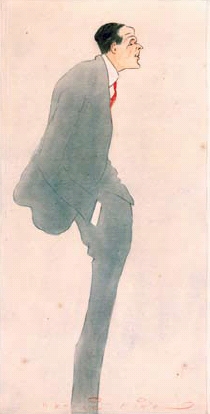

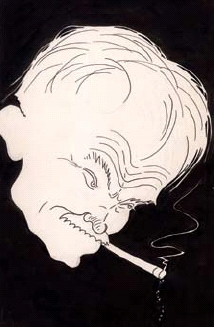
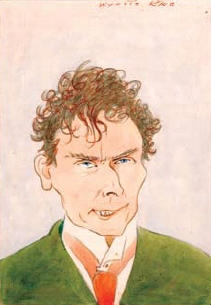
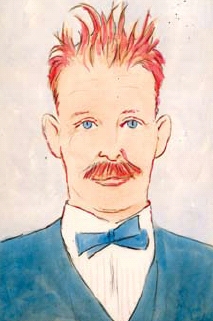
With his reputation growing,
King became a regular contributor
to the Saturday Evening Post in
1925, joining one of America’s
best-known illustrators, Norman
Rockwell. As the magazine later
printed in 1935, 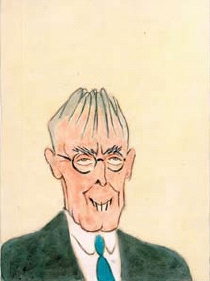 readers loved
King’s “curious eye, which is like
a camera endowed with imagination
and an irrepressible sense of
humor.” In the 1940s, King’s eyesight
diminished, but he continued
to illustrate a number of children’s
books authored by his wife,
including Chipper (1941), Wishing
Window (1942), and Puzzle
Pond (1948). In his later years,
King retired to Chapel Hill, North
Carolina, and maintained a summer
residence on Sutton Island
in Maine. He died in 1961 while
vacationing in Athens, Greece.
readers loved
King’s “curious eye, which is like
a camera endowed with imagination
and an irrepressible sense of
humor.” In the 1940s, King’s eyesight
diminished, but he continued
to illustrate a number of children’s
books authored by his wife,
including Chipper (1941), Wishing
Window (1942), and Puzzle
Pond (1948). In his later years,
King retired to Chapel Hill, North
Carolina, and maintained a summer
residence on Sutton Island
in Maine. He died in 1961 while
vacationing in Athens, Greece.
As correspondence at the Filson indicates, King frequently sent his friends and acquaintances impromptu caricatures, often receiving letters of appreciation in return. Even as his eyesight and health deteriorated, King’s comic sense did not, as evidenced by the whimsical drawing of two fish that he sketched on a 1958 envelope addressed to Filson Curator Dorothy Cullen. The Filson’s Wyncie King collection is a testament to his comic sensibilities and his remarkable artistic talent. While these caricatures document a colorful array of Louisville residents and visitors during the 1910s and 1920s, they also provide a window into the life and work of an artist who contributed much to the golden age of an amusing art form.
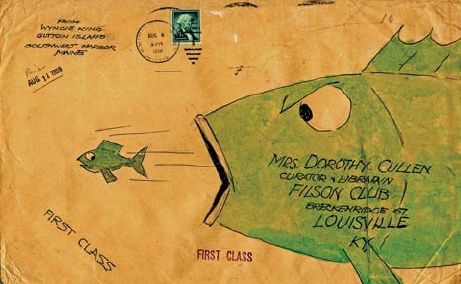
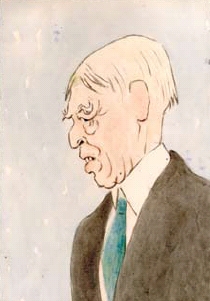


The Filson Historical Society
1310 South Third Street - Louisville, KY 40208
Phone: (502) 635-5083 Fax: (502) 635-5086
Hours
The Ferguson Mansion and Office
Monday - Friday: 9 am. - 5 pm.
Saturday and Sunday closed
Library
Monday - Friday: 9 am. - 5 pm.
Saturday: 9 am. - 12 noon
